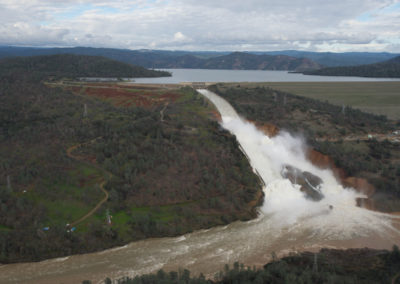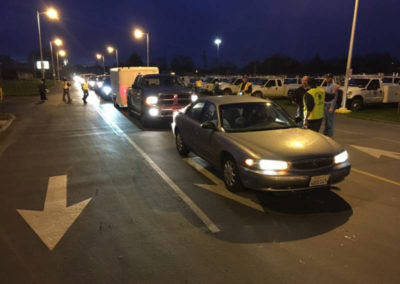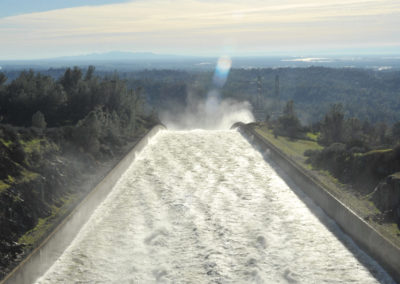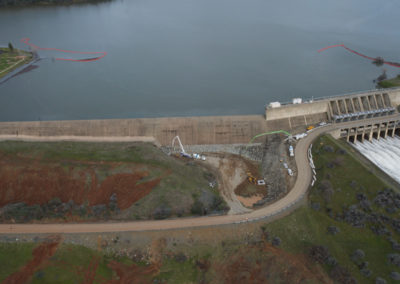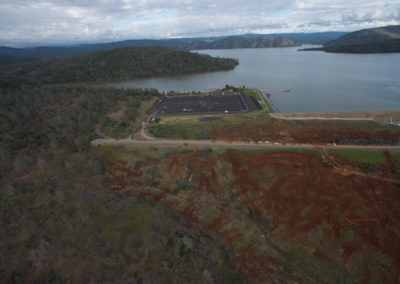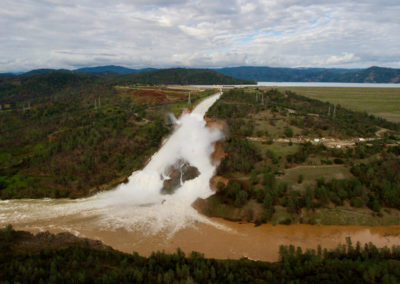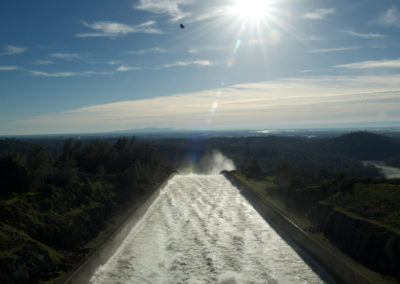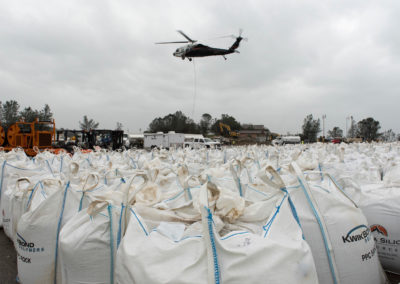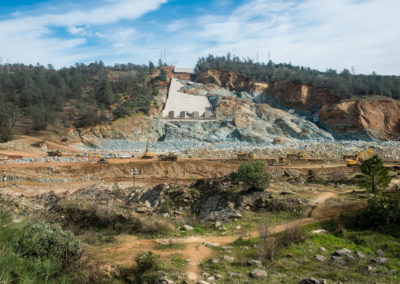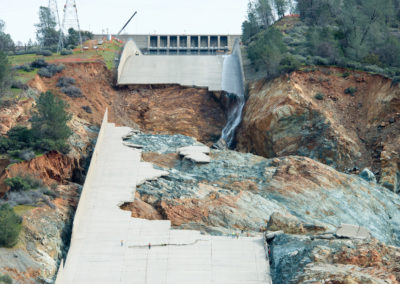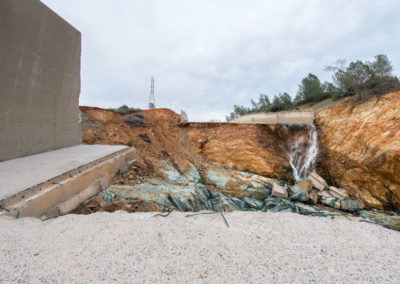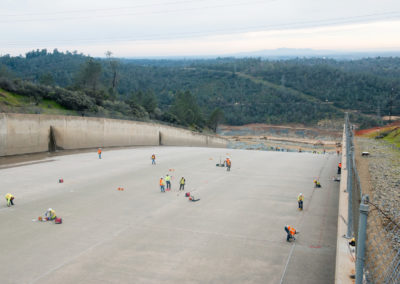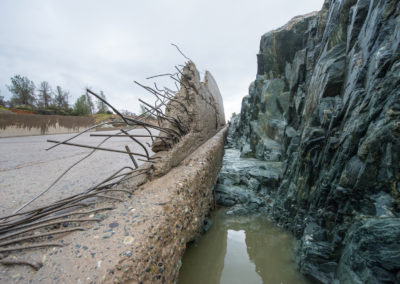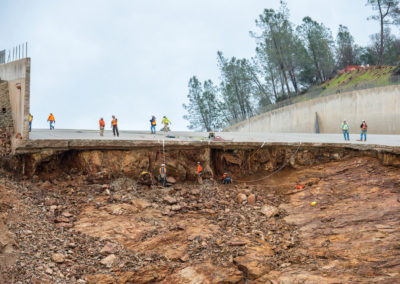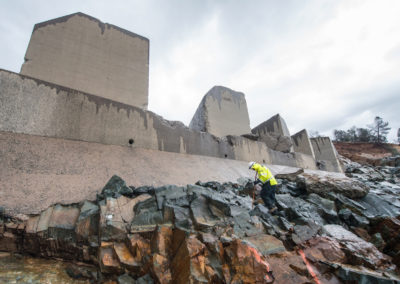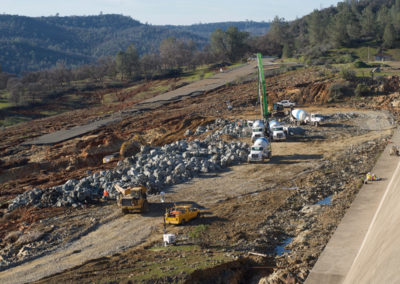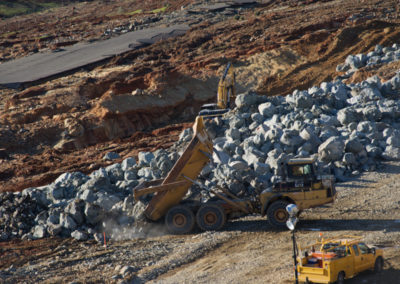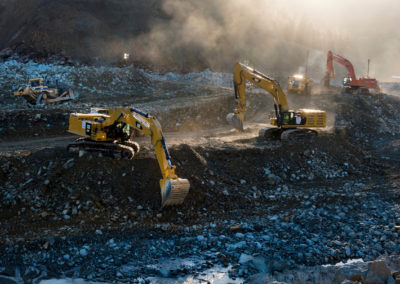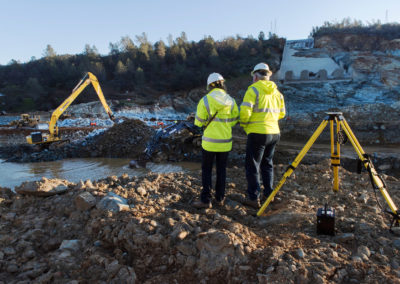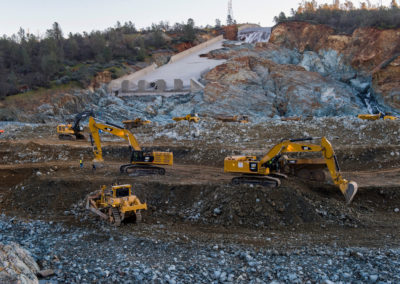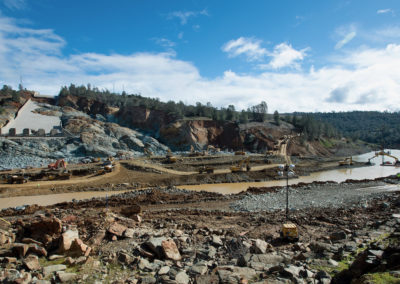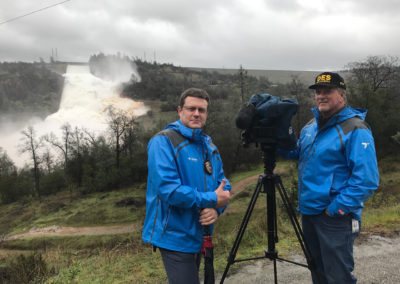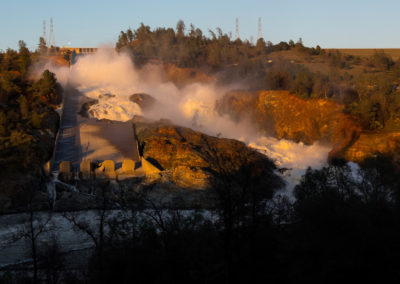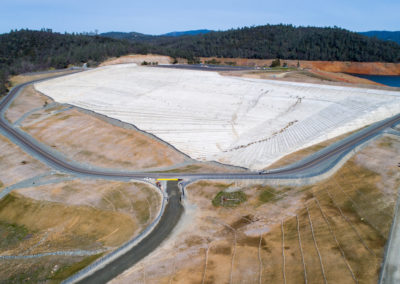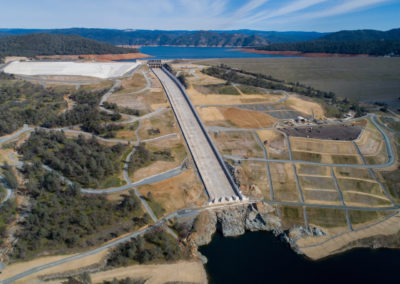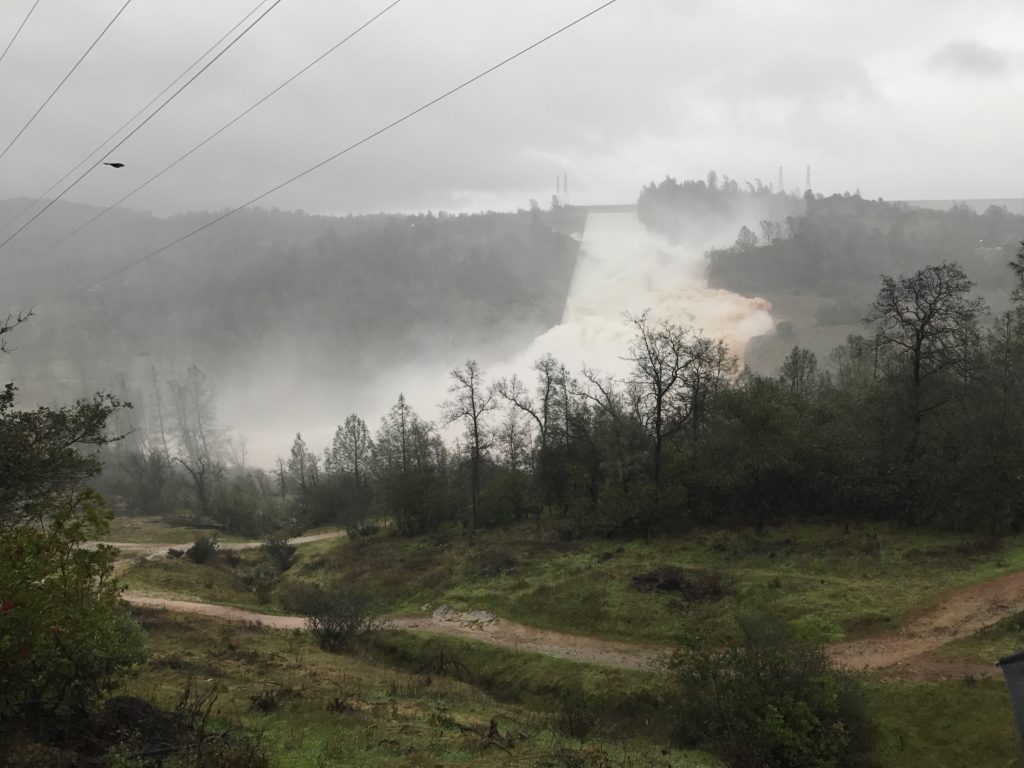
Cal OES Photo: Raging water flows out of the Oroville Dam spillway prior to closure
Oroville Spillway Incident: The Atmospheric Impetus
Winters in northern California are normally wet, but not as saturated as they were in 2017. January and February of that year were among the wettest months on record for the entire 110-year history of Feather River hydrology. As the days and weeks passed during those months, rain poured, raising levels in California’s lakes, rivers and reservoirs to capacity – some going above.
Over the next week and a half, the California Governor’s Office of Emergency Services (Cal OES) and the California Department of Water Resources (DWR) would come to understand intimately the impacts this wet weather would have on our nation’s tallest dam.
The Oroville Reservoir Dam in Butte County began to show signs of compromise and inadequacy. According to DWR, the Feather River watershed above the Oroville reservoir received an entire year’s average runoff – 4.4 million acre-feet – in 50 days during those two months. During routine visual inspections on February 7, 2017, officials discovered damage to Oroville’s main spillway.
As a large atmospheric river storm settled over the Feather River basin, massive inflows and higher than expected precipitation increased lake levels rapidly. For the first time in the Oroville spillways history, the lake reached 901 feet and activated the emergency spillway, an uncontrolled concrete weir that allows water to pour over onto a bare hillside.
Then on February 12, Butte County Sheriff’s Office gave the evacuation order for the city of Oroville and multiple downstream communities along the Feather River due to concerns about downhill erosion threatening the emergency spillway structure. It’s estimated 188,00 people evacuated throughout the Feather River Basin.
On February 13, Cal OES coordinated with the National Guard to put 23,000 guards on standby to be ready for immediate deployment if the dam spillway should fail to help with evacuation and relief efforts. The next day, at 2:45 p.m., the evacuation order above was reduced to an evacuation watch by Cal OES officials and DWR and could return to the evacuated areas.
The Catalyst for Cal OES and New Requirements for Emergency Action Plans for Dam Safety
A significant result of the Oroville Spillway Incident was the creation of the Dam Safety Planning Division at Cal OES. Jose Lara was involved from the beginning of its inception.
In 2018, the main spillway was fully reconstructed, and the emergency spillway was completed. A concrete buttress to further bolster the emergency spillway weir and an underground secant pile wall and splashpad on the hillside were constructed to prevent uphill erosion if the emergency spillway is ever used again.
More than 1,000 people worked more than 2 million hours to rebuild the Oroville spillways to ensure the safety of downstream communities.
FL_Oroville-7227_03_03_2017
Kory L. Honea, Butte County Sheriff, and Bill Croyle, DWR Acting Director, update the media during the Oroville Dam Spillway press briefing
OrovilleEvacueesHighway_AppealDemocrat
Appeal-Democrat Photo: Long line of cars gridlock highway during Oroville evacuation
OrvilleDam
The Washington Post Photo: Evacuee Shirley Baker consoles her great-granddaughter Rylee Rhodes at the evacuation center
DSC_5791
Cal OES Photo: A skycrane helicopter carries a just-emptied load of rock above the flowing Oroville Dam Spillway
Oroville Spillway Damage & Repair
DWR Photo: A helicopter prepares to latch onto another bag of rock and material to be delivered to the base of the Lake Oroville emergency spillway.
Oroville Spillway Damage & Repair
DWR Photo: Concrete trucks wait on the top of Oroville Dam to deliver concrete for the erosion repair work
IMGL9603
Cal OES Director Mark Ghilarducci and Governor Brown talk to SOC emergency response coordination team
FL_Oroville-7035_03_03_2017
DWR Photo: Contractors continue to remove sediment and debris below the Oroville Dam spillway in Oroville, California, on March 3, 2017
FL_Oroville-6921_03_03_2017
DWR Photo: Workers inspect the damage at Oroville Dam flood control spillway, March 3, 2017
FL_Oroville-7628_03_03_2017
DWR Photo: Work and assessment continues on the damaged Oroville Dam flood control spillway in Oroville, California, March 3, 2017
FL_Oroville-8387_03_04_2017
DWR Photo: The side of the Oroville Dam spilllway wall is badly damaged, exposing its rebar, March 4, 2017
FL_Oroville-7745_03_03_2017
DWR Photo: Work and assessment continues on the damaged Oroville Dam main spillway in Oroville, California, March 3, 2017.
FL_Oroville-8345_03_04_2017
DWR Photo: Geologist John Curless explores the area beneath the Oroville Dam spillway dissipator blocks, March 4, 2017
Oroville Spillway Damage & Repair
Cal OES Photo: Large dump trucks unload rock to shore up erosion control on emergency spillway
Oroville Spillway Damage & Repair
DWR Photo: Heavy equipment work continues just after daybreak on March 1, 2017
Oroville Spillway Damage & Repair
DWR Photo: California Department of Water Resources Acting Director Bill Croyle, right, viewing heavy equipment work
Oroville Spillway Damage & Repair
DWR Photo: Heavy equipment work continues Wednesday morning March 1, 2017
KG_oroville_repair_15877_03_05_2017
DWR Photo: Heavy equipment work continues to remove the debris field in the diversion pool at the base of the damaged Oroville Dam spillway
Oroville Spillway Damage & Repair
DWR Photo: 50,000 cubic feet per second (cfs) of water discharges from the spillway to manage lake levels February 25, 2017.
KG_oroville_49384_02_04_20
DWR Photo: Lake Oroville emergency spillway and the excavation done to re-establish the hillside grade and provide erosion control. Feb. 2020
Resource Links
Cal OES: Oroville Spillway Incident Resource Page
Oroville Spillway Crisis and Evacuation of the Feather River Basin
Revisiting the Oroville Dam Spillway Failure
Video Links
Oroville Lake Emergency Spillway Aerial Video – Sat Feb. 11, 2017
State Agencies Mobilize to Oroville Dam, Strategize Repairs and Rumor Control
OES News In Depth: Progress, Teamwork and Signs of Hope
Governor Brown Speaks from the State Operations Center for Oroville Spillway Response and Recovery
Oroville Dam Aerial Video – Feb 16 2017
State and Federal Agencies Continue Storm Recovery Efforts
Lake Oroville Dam Spillway Coverage Video Playlist


